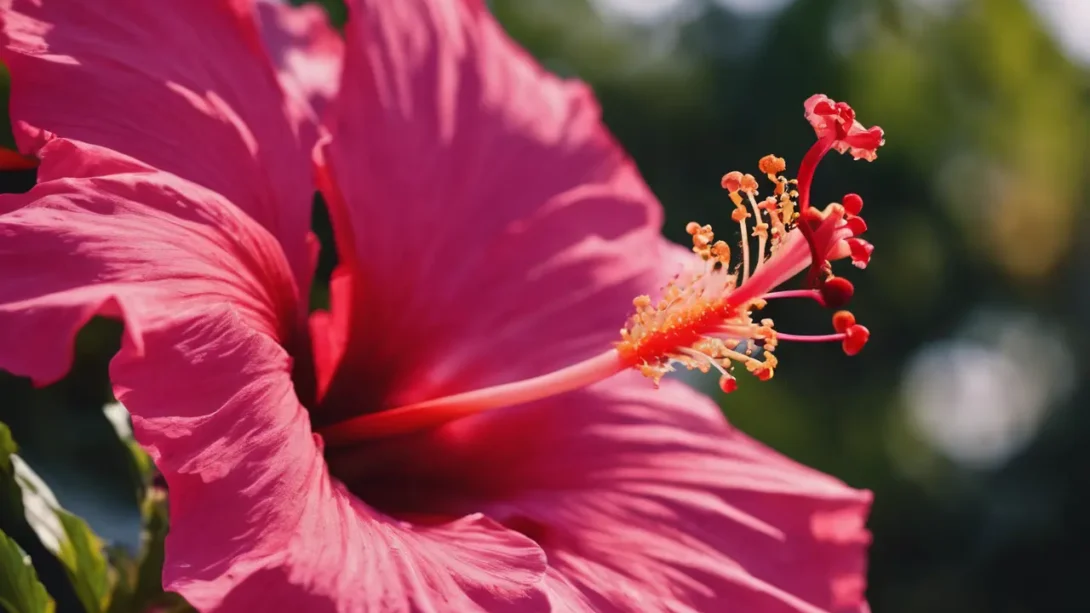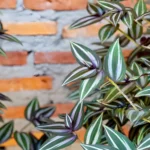Deadheading is the process of removing faded or dead flowers from plants to encourage further blooming. For hibiscus plants, this practice is particularly beneficial, as it not only promotes a continuous display of flowers but also diverts the plant’s energy from seed production to the development of new blooms. There are two main types of hibiscus commonly found in gardens: the tropical hibiscus (Hibiscus rosa-sinensis) and the hardy hibiscus (Hibiscus moscheutos) among others. Each type requires a slightly different approach to care and deadheading due to their distinct growing conditions and bloom cycles.
Regular deadheading is crucial for maintaining the health and bloom production of hibiscus plants. It helps in preventing diseases and pests that are often attracted to decaying plant material. Additionally, by keeping the plants tidy and free of spent blooms, deadheading also enhances the overall aesthetic appeal of your garden.
Tools and Materials Needed
To deadhead hibiscus effectively, you will need a few basic gardening tools. A sharp pair of pruning shears or scissors is essential for making clean cuts that will not harm the plant. It’s important to choose a tool that feels comfortable in your hand and is suitable for the size of the plant and thickness of its stems. Gardening gloves are also recommended to protect your hands from thorns and sap, which can be irritating to some people’s skin.
Optionally, having a basket or bag on hand for collecting the spent blooms can make cleanup easier and help keep your garden tidy. Proper disposal of the dead flowers can also reduce the likelihood of pests and diseases in your garden.
Identifying Blooms to Deadhead
Knowing when and which blooms to deadhead is key to effectively caring for your hibiscus plants. Spent blooms are typically easy to identify; they appear wilted, discolored, and are no longer vibrant. Unlike fresh buds, which are firm and brightly colored, ready-to-deadhead flowers may start to droop and detach easily from the plant.
It’s important to differentiate between spent blooms and buds preparing to open. Buds are usually green or begin showing color at the tips, indicating they are not yet ready to be removed. Regularly inspecting your plants will help you become familiar with their blooming patterns and ensure that you are deadheading the right parts at the right time.
By starting with these initial steps, you’re well on your way to mastering the deadheading of hibiscus plants, setting the stage for a garden that thrives with continuous blooms and vibrant colors.
Step-by-Step Guide to Deadheading Hibiscus
Tropical Hibiscus
Tropical hibiscus, known for their large, colorful flowers, thrive in warm environments and can bloom year-round in the right conditions. Deadheading these plants is straightforward but requires a gentle touch to avoid damaging the plant.
- Identify the spent flower: Look for blooms that have fully wilted and are visibly past their prime.
- Locate the base of the spent bloom: Trace the stem of the wilted flower back to the first set of healthy leaves.
- Make a clean cut: Using your pruning shears, cut the stem just above the leaf set, ensuring the cut is clean and angled slightly to prevent water accumulation on the cut surface.
Deadheading tropical hibiscus should be done regularly, as these plants can produce blooms continuously in ideal conditions. By removing spent blooms, you encourage the plant to focus its energy on producing new flowers rather than developing seed pods.
Hardy Hibiscus
Hardy hibiscus varieties, which are known for their ability to withstand colder climates, have a different growth habit and blooming cycle compared to their tropical cousins. These plants typically bloom later in the season and may not require as frequent deadheading.
- Identify the spent bloom: As with tropical hibiscus, look for flowers that have wilted and are no longer visually appealing.
- Cut back to a new bud or leaf: Hardy hibiscus flowers often grow on new shoots coming from the main stems. Cut the stem just above a healthy bud or leaf node, where new growth can emerge.
For hardy hibiscus, deadheading can also be part of preparing the plant for winter. Removing spent blooms and trimming back the stems to a healthy bud can help encourage robust growth in the following season.
Aftercare and Maintenance
After deadheading your hibiscus plants, a few additional care steps can help ensure they continue to grow vigorously and bloom beautifully.
- Watering: Hibiscus plants enjoy moist, well-drained soil. After deadheading, ensure your plants are adequately watered, especially during hot, dry periods.
- Fertilizing: A balanced, slow-release fertilizer applied after deadheading can provide the necessary nutrients for continued growth and blooming. Be cautious with nitrogen-heavy fertilizers, as they can promote leaf growth at the expense of blooms.
- Monitoring for pests and diseases: Keep an eye out for common hibiscus pests such as aphids, spider mites, and whiteflies. Regular inspection and prompt treatment can prevent these pests from causing significant damage.
By following these steps for tropical and hardy hibiscus varieties, and providing thoughtful aftercare, you’ll encourage a healthy, blooming plant that adds beauty and color to your garden for many seasons. Deadheading, combined with proper maintenance, sets the foundation for a thriving hibiscus plant that will be a centerpiece in your garden.
Troubleshooting Common Issues
Even with careful attention to deadheading and maintenance, gardeners may encounter a few hurdles. Here are solutions to some common problems:
- Damaged Plants: If a plant becomes damaged during deadheading, trim any jagged edges with clean shears to promote healing. Consider applying a natural antifungal agent to prevent infection.
- No New Blooms: If your hibiscus is not producing new blooms after deadheading, ensure it is receiving enough sunlight, water, and nutrients. Sometimes, a bloom hiatus is natural, especially after a vigorous flowering period or during extreme temperatures.
- Over- or Under-Deadheading: Finding the balance in deadheading frequency is key. Over-deadheading can stress the plant, while under-deadheading may lead to energy being wasted on seed production. Adjust based on the plant’s response and seasonal changes.
Conclusion
Deadheading hibiscus is more than a mere gardening chore; it’s an act of care that supports the vibrant life cycle of these stunning plants. By removing spent blooms, you not only tidy up the appearance of your garden but also encourage the production of new, beautiful flowers. This practice, essential for both tropical and hardy hibiscus varieties, ensures that your plants remain vigorous and blooming extensively throughout their growing season.
Regular deadheading, combined with proper aftercare such as watering, fertilizing, and monitoring for pests, sets the stage for your hibiscus plants to thrive. It’s a testament to the gardener’s dedication to their craft and the flourishing beauty of their garden. Embrace the routine of deadheading as a pathway to a lush, vibrant garden that captivates and delights all who encounter it.
Incorporating deadheading into your regular gardening routine promises a rewarding outcome: a garden filled with lush, blooming hibiscus plants that stand as a testament to your care and dedication. Let the practice of deadheading be a gateway to exploring the full potential of your garden’s beauty, ensuring that your hibiscus plants remain a captivating showcase of color and life.



